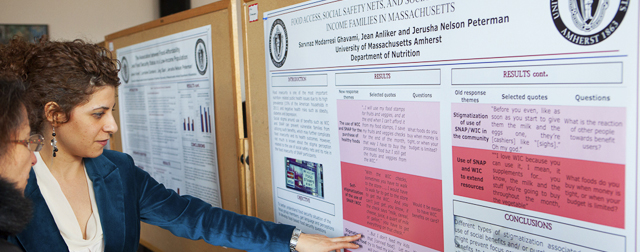Selected Tea and Tea Pomace Extracts Inhibit Intestinal α-Glucosidase Activity in Vitro and Postprandial Hyperglycemia in Vivo
Publication Date
2015
Journal or Book Title
International Journal of Molecular Sciences
Abstract
Type 2 diabetes mellitus (T2DM) is a metabolic disorder characterized by postprandial hyperglycemia, which is an early defect of T2DM and thus a primary target for anti-diabetic drugs. A therapeutic approach is to inhibit intestinal α-glucosidase, the key enzyme for dietary carbohydrate digestion, resulting in delayed rate of glucose absorption. Although tea extracts have been reported to have anti-diabetic effects, the potential bioactivity of tea pomace, the main bio waste of tea beverage processing, is largely unknown. We evaluated the anti-diabetic effects of three selected tea water extracts (TWE) and tea pomace extracts (TPE) by determining the relative potency of extracts on rat intestinal α-glucosidase activity in vitro as well as hypoglycemic effects in vivo. Green, oolong, and black tea bags were extracted in hot water and the remaining tea pomace were dried and further extracted in 70% ethanol. The extracts were determined for intestinal rat α-glucosidases activity, radical scavenging activity, and total phenolic content. The postprandial glucose-lowering effects of TWE and TPE of green and black tea were assessed in male Sprague-Dawley (SD) rats and compared to acarbose, a known pharmacological α-glucosidase inhibitor. The IC50 values of all three tea extracts against mammalian α-glucosidase were lower or similar in TPE groups than those of TWE groups. TWE and TPE of green tea exhibited the highest inhibitory effects against α-glucosidase activity with the IC50 of 2.04 ± 0.31 and 1.95 ± 0.37 mg/mL respectively. Among the specific enzymes tested, the IC50 values for TWE (0.16 ± 0.01 mg/mL) and TPE (0.13 ± 0.01 mg/mL) of green tea against sucrase activity were the lowest compared to those on maltase and glucoamylase activities. In the animal study, the blood glucose level at 30 min after oral intake (0.5 g/kg body wt) of TPE and TWE of both green and black tea was significantly reduced compared to the control in sucrose-loaded SD rats. The TPE of all three teas had significantly higher phenolic content than those of the TWE groups, which correlated strongly with the DPPH radical scavenging activity. This is the first report of tea pomace extract significantly inhibits intestinal α-glucosidase, resulting in delayed glucose absorption and thereby suppressed postprandial hyperglycemia. Our data suggest that tea pomace-derived bioactives may have great potential for further development as nutraceutical products and the reuse of otherwise biowaste as valuable bioresources for the industry.
DOI
https://doi.org/10.3390/ijms16048811
Volume
16
Special Issue
Bioactive Phytochemicals and Functional Food Ingredients in Fruits and Vegetables
Issue
4
License
UMass Amherst Open Access Policy
Creative Commons License

This work is licensed under a Creative Commons Attribution 4.0 License.
Recommended Citation
Oh, Jungbae; Jo, Sung-Hoon; Kim, Justin S.; Ha, Kyoung-Soo; Lee, Jung-Yun; Choi, Hwang-Yong; Yu, Seok-Yeong; Kwon, Young-In; and Kim, Young-Cheul, "Selected Tea and Tea Pomace Extracts Inhibit Intestinal α-Glucosidase Activity in Vitro and Postprandial Hyperglycemia in Vivo" (2015). International Journal of Molecular Sciences. 222.
https://doi.org/10.3390/ijms16048811
